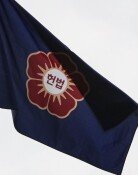Third wave is result of belated, inconsistent response
Third wave is result of belated, inconsistent response
Posted November. 27, 2020 07:42,
Updated November. 27, 2020 07:42
The number of new COVID-19 cases in South Korea recorded 538 on Thursday, surpassing 500 for the first time since the first wave which hit Daegu and the North Gyeongsang Province hardest. It has only been a week since the government announced the beginning of a third wave on Friday, and daily cases are already higher than the peak in the second wave. Local outbreaks, small and large, are taking place across the country including at military training facilities, dance studios, public saunas and education centers for public servants.
We have learned from experience that infections fall when stricter social distancing rules are put in place. A local outbreak occurred at a club in Itaewon after a long weekend in May, and the second wave hit towards the end of the summer holiday season. The third wave was inevitable given that the government disregarded the criteria for the tiered system and eased COVID-19 restrictions by moving down a tier on October 12 when the virus was still not under control. It resumed vouchers on October 22 to encourage spending and revised the tier system to have five tiers on November 7. This series of actions taken by the government has left the country more susceptible to the spread of the virus.
Daily new cases were 380 on average for the past seven days, which is much higher than 300 (tier 2) and closer to 400 to 500 (tier 2.5). The government, however, refuses to move up a tier to tier 2, saying that it will wait and see how the trend changes. How can a government expect the public to follow social distancing rules when it does not? To make things worse, about 500,000 students will sit the national university entrance test next Thursday.
The situation is much worse than it was in the first wave where most patients were concentrated in Daegu and the North Gyeongsang Province. Numbers are rising more quickly than in the second wave, there are multiple local outbreaks across the country, and most patients are young and asymptomatic. All this makes it more difficult for the healthcare system to respond. During the first wave, so many people died even before they could see the doctor even though healthcare workers across the country flocked to Daegu and the North Gyeongsang Province to help. At this rate, hospitals will run out of intensive care beds in a week. The government should prepare the current healthcare system for a surge in cases and adopt a consistent approach to stop the spread of the virus. This could easily spiral out of control, especially as we are heading into the winter months without a vaccine and treatment.
Headline News
- Med professors announce intention to leave hospitals starting Thursday
- Bridge honoring Sgt. Moon Jae-sik unveiled in Pennsylvania
- Chief of Staff Chung tells presidential secretaries to stay away from politics
- US FTC bans noncompete agreements
- N. Korea launches cyberattacks on S. Korea's defense companies







